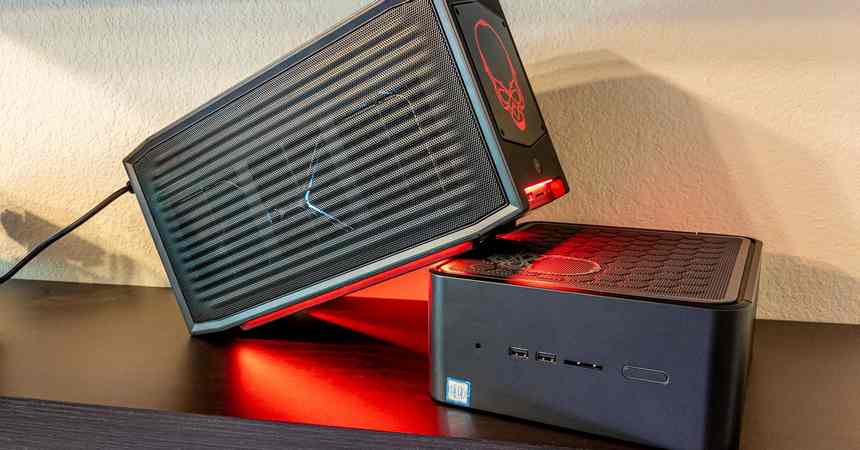Building your own gaming PC is a labor of love. It’s not something that needs to be “easier,” exactly. But from the moment I set a screwdriver to Intel’s new NUC 11 Extreme, aka “Beast Canyon,” I couldn’t help marveling at how brilliant a eight-liter gaming machine can be.
Beast Canyon is Intel’s fourth attempt to design a more compact gaming PC than most gamers could dream of building on their own, and paradoxically, it’s Intel’s biggest chassis yet. Like last year’s Ghost Canyon, it’s attempting to change the way mini-PCs are built with its Compute Element cartridges, which contains a miniaturized motherboard, CPU, memory, storage, and ports you can swap all at once. That way, you can theoretically upgrade your entire system just like you’d upgrade a graphics card, right down to plugging it into a PCI-Express slot. (As I’ll explain, the truth may be a little more complicated.)
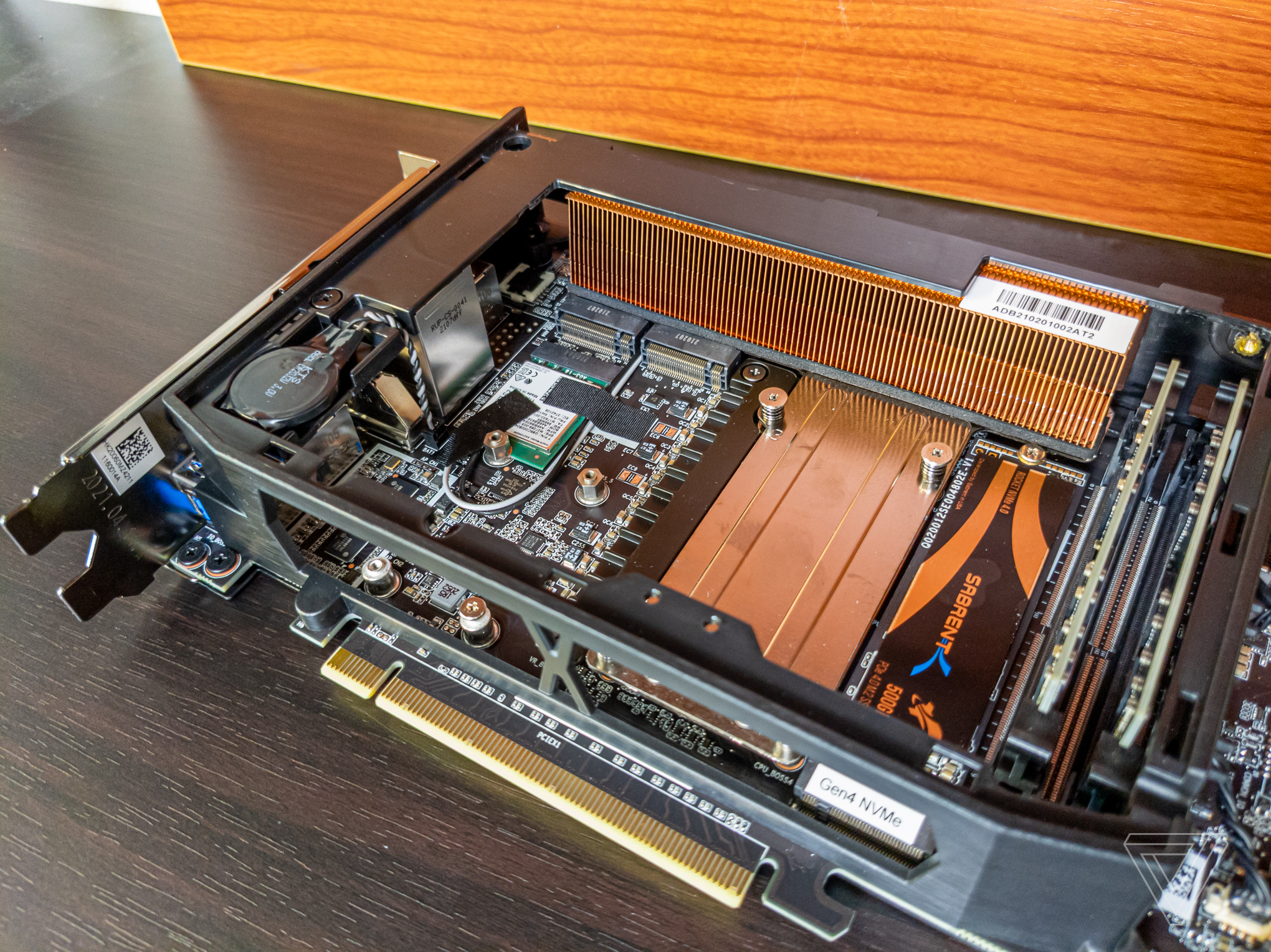
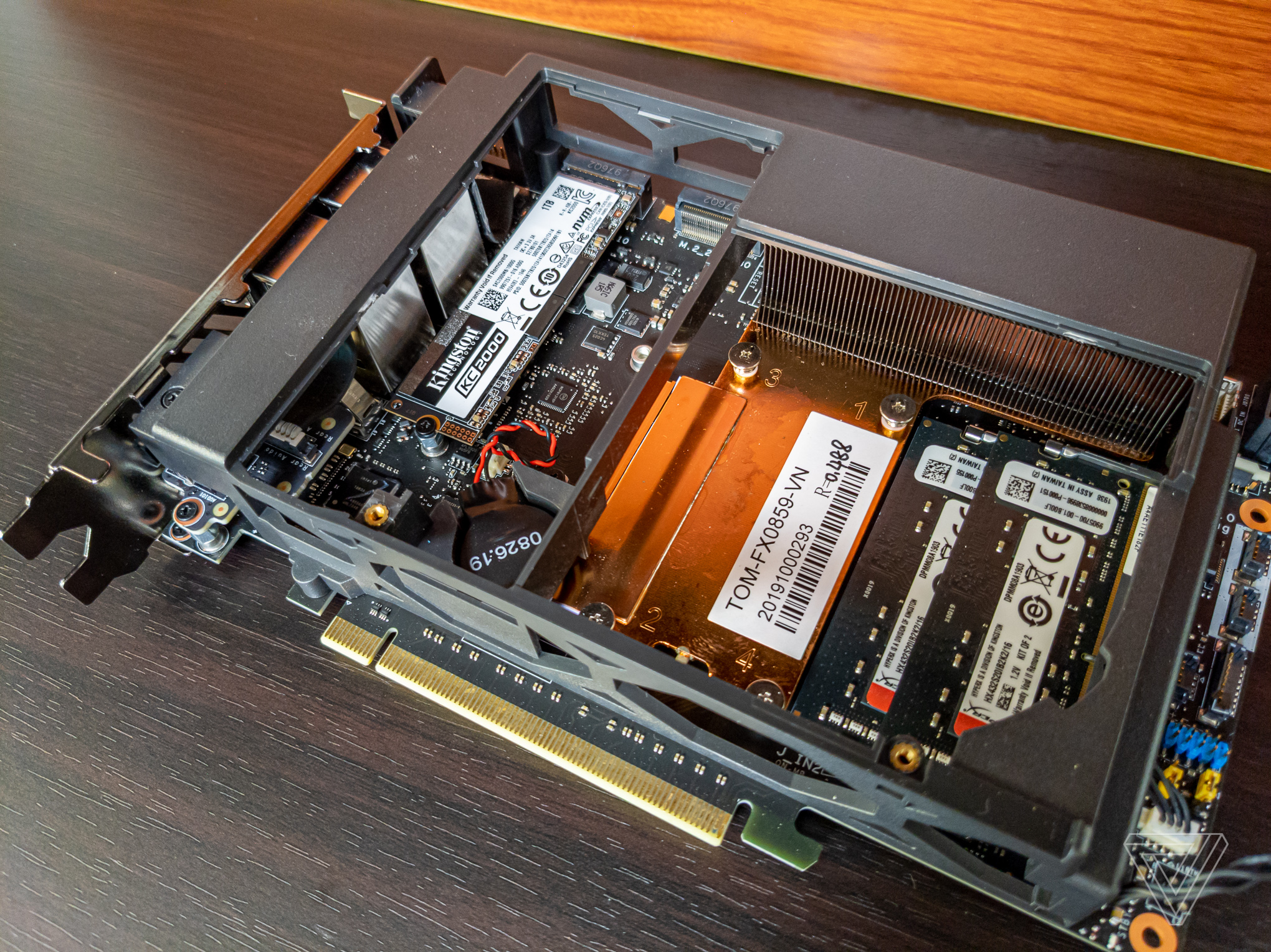
Related
NUC 8, “Hades Canyon”
NUC 9 Extreme, “Ghost Canyon”
NUC 11 Enthusiast, “Phantom Canyon”
Where Ghost was a 5-liter rounded rectangular prism that barely fit an 8-inch-long graphics card, the 8-liter Beast lives up to its name with room for 12 inches of GPU power and an included 650-watt 80+ Gold power supply. It was enough to let me easily fit and sufficiently power one of the most powerful GPUs on the market, the Nvidia GeForce RTX 3080 Ti Founder’s Edition, and it instantly takes this box’s gaming cred far beyond Intel’s previous attempts.
That extra room and power is important, because the upgrade options for a smaller 5-liter box like the Ghost haven’t been looking that hot. While some of Nvidia and AMD’s most powerful cards in prior years have shrunken down to fit tiny cases, the latest batch of RTX 3000 and AMD 6000 series GPUs have gone the opposite direction, with most OEMs opting for oversized cards even compared to Nvidia’s own Founder’s Editions. Last I checked, the most powerful card that will fit the Ghost is EVGA’s RTX 3060 Ti, but the Beast can hold practically every dual-slot graphics card up to a 350W TDP, which just so happens to be where the RTX 3080 Ti tops out anyways.

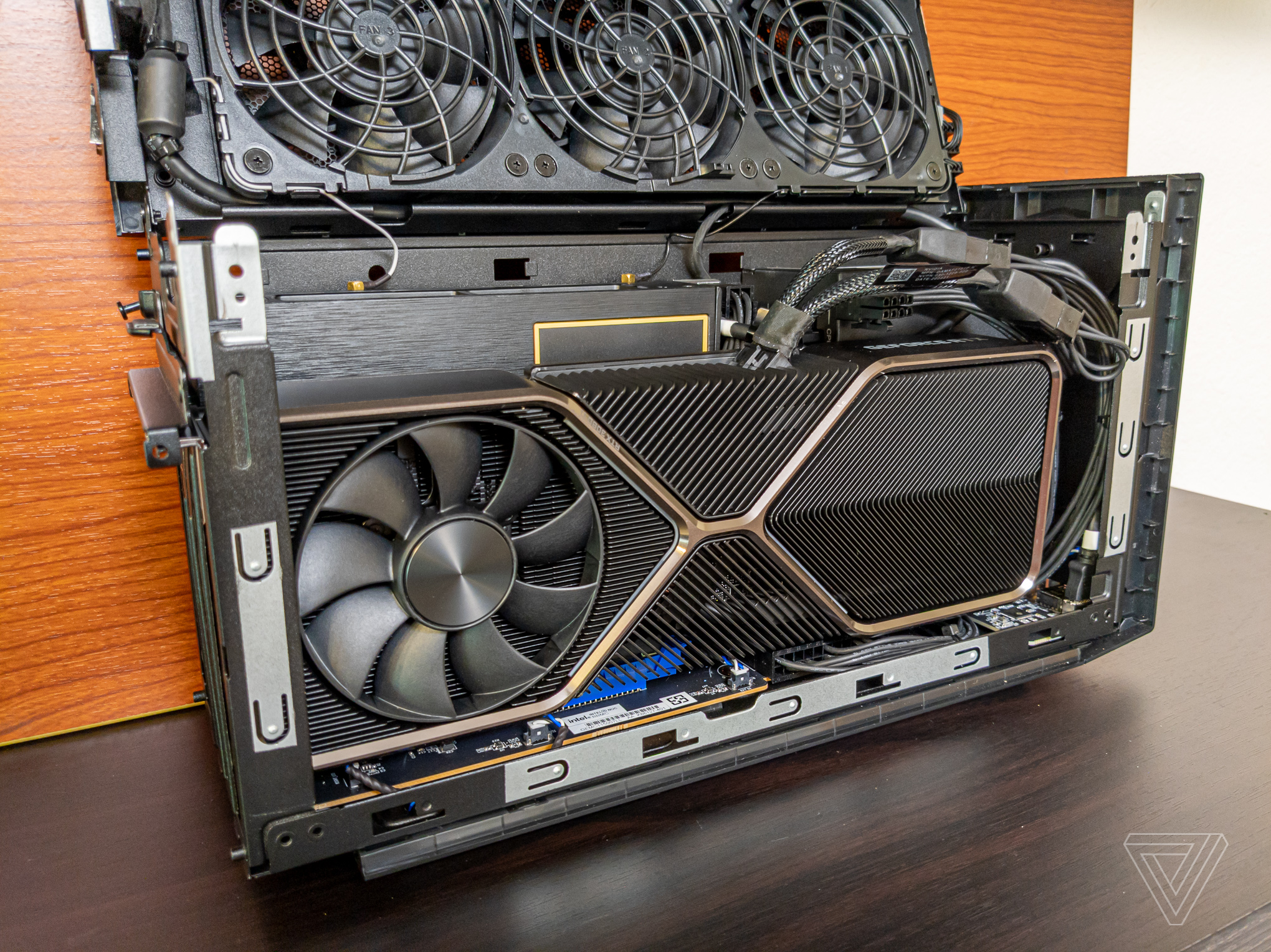
That might make this 8-liter box one of the smallest competent 4K gaming PCs you can buy — in benchmarks with a pre-production sample of the Core i9-11900KB, I saw the Beast post numbers within a stone’s throw of those my colleague Tom Warren saw when he reviewed the 3080 Ti with his full-size desktop. I can’t call today’s article a full review without lots of testing on a full production board, but based on the numbers I’m seeing in demanding games like Watch Dogs: Legion (which fell just short), most other titles should average over 60 frames per second at 4K with maximum settings sans raytracing.
And while you could probably build a more satisfying, less plasticky and skull-laden rig with boutique cases like the 8.2-liter Louqe Ghost S1 and 7.2-liter Dan A4, most prebuilt mini gaming rigs are far larger, like the 12-liter Corsair One. Perhaps more importantly, I doubt any of them are as effortless to work inside. (I love my 12.7-liter Ncase M1, but even it’s a squeeze sometimes.)
-
Intel’s NUC 11 Extreme, aka Beast Canyon. You can turn off the lighting, or print out a different pattern instead of a skull if you prefer.
-
The new 8-liter NUC may be small, but it’s a lot larger than last year’s 5-liter model.
-
The old one was taller, though.
-
Here’s what Beast Canyon looks like inside, after the first four screws. You can just slide off the side panels and flip open the top for easy access.
-
The new NUC comes with a fan shroud for ventilation. Last year’s NUC just had a simple plastic flap to separate its CPU fan from your GPU.
-
That shroud doesn’t line up with the old Compute Element, but it’s probably for the best.
-
Here’s the new Compute Element for comparison. Same size, different headers, but there’s a pigtail of breakout cables that do most of the same things.
-
Here’s a look inside the new Compute Element, with its wide radiator and extra M.2 SSD slots.
-
The old Compute Element had a much smaller radiator, lay-flat memory modules, and a lot of wasted space.
-
Much more cooling for the CPU, less for the SSDs.
-
One fewer Ethernet port on the new Compute Module, but you get 2.5Gbps instead of Gigabit and Thunderbolt 4 instead of 3.
-
Front ports include full-size USB, 3.5mm headset, and a full-size UHS-II SD card slot.
-
The screws are mounted atop the Compute Module this time for easy access.
-
You can easily open up the module to add storage without removing it from your case.
-
This time, it’s a fully modular 650W 80+ Gold SFX power supply instead of a 500W Flex ATX one.
-
Three pre-installed 92mm fans with cable guards, all hooked up to headers so you’ve only a single cable down to the Compute Element.
-
The fans have built in cable channels for the Wi-Fi antennas so they don’t dangle like in the original.
-
Quite a design and spot for the tiny folded rear Wi-Fi antenna to live.
-
On the other side of the case, the power supply has full airflow, and there’s a dedicated window for the Compute Element’s release lever.
-
On the bottom, an extra-long 110mm PCIe NVMe Gen 4 drive slot, and a button to turn off the LED lighting.
-
Fitting an RTX 3080 Ti GPU.
-
Here’s how much extra space you have with a 3060 instead. Note you have both this right-angle 8-pin PCIe power cable, and a pair of 6/8-pin ones, too.
It’s not just the fact that Intel’s modular Compute Element cards let you theoretically swap a bunch of components at once. The internal layout also just makes sense. Instead of having to pivot-pivot-pivot your GPU in and out of the system (or physically remove part of the internal frame, like Intel’s Ghost) you can flip up the entire top of the Beast, triple-fan-array and all, to easily swing a full-size graphics card in and out of the machine. The whole top pivots on a hinge.
The Beast also has perfect-length power cables for its fully modular SFX power supply, special wire channels for its Wi-Fi antennas and fan cables to go just they need to be, and screws with their own retaining clips (though not spring-loaded screws, like the Ghost). It’s not the prettiest build, inside or out, but there’s loads of utility. Also, you can turn off the LED lighting with a dedicated hardware button on the bottom.
Like previous Intel NUCs, there’s above-average connectivity and expandability, too. Ports include eight full-size USB 3.1 plus additional headers inside the case, two Thunderbolt 4 ports, 2.5Gbps Ethernet, HDMI 2.0, an UHS-II SD card slot, a 3.5mm audio jack, Wi-Fi 6E and Bluetooth 5.2. I just wish one of those USB-C ports was on the front of the case for easier access.
Oh, and there’s room for up 64GB of DDR4 memory and four full-length M.2 slots for your stick SSD storage — three M.2 2280 slots inside the Compute Module and a rare 110mm long M.2 slot with Intel Optane support on the bottom of the case. Two of them can do PCIe NVMe Gen 4 storage, the other two offer your choice of Gen 3 NVMe or SATA 3. Also, the entire NUC chassis is five PCIe slots wide instead of four, giving you room for an additional single-slot card — or the included CPU fan shroud for better ventilation.
Processors and pricing
It’s important to note Intel doesn’t sell fully built computers — the NUC 11 Extreme is sold in barebones kits where you (or a reseller) have to purchase and add your own memory, storage, operating system, and graphics card separately. Everything else comes with, including the case, power supply, module with preinstalled CPU and ports, cooling, etc.
Intel will sell two kits, where the only difference is the processor: your choice of a 11th Gen 8-core, 16-thread Core i7-11700B, or an 11th Gen 8-core, 16-thread Core i9-11900KB with 4MB of additional cache, 100MHz higher turbo clockspeed, and presumably an unlocked multiplier for potential overclocking since that’s what “K” always means.
Intel says the Core i7 kit should cost somewhere around $1150, and the Core i9 kit somewhere around $1,350, when they ship in Q3. Intel partner SimplyNUC is also offering turnkey versions starting at $1,399 and $1,599 respectively.
Intel will also sell the Compute Element modules separately, in the range of $780-$980.
Despite all this goodness, I’m not sold on Intel’s Beast, and it comes down to three things: 1) I’m a cheapskate who knows I can generally get more for my money if I don’t lock myself to a single brand, 2) finding any graphics card is an exercise in frustration right now, much less a dual-slot, and 3) I still don’t trust Intel, or anyone, to keep pumping out modules for as long as I’d like to upgrade such a computer.
To be fair, Intel’s doing better than most in that regard. While Alienware broke its upgradable promise entirely with the Area-51m, Intel says the 11th Gen Compute Element will work in last year’s Ghost Canyon — kinda.
The new module “will be able to technically plug into the NUC 9 Extreme Kit, but Intel will not be providing interactive support for that usage model,” a rep tells me, adding that “There were some design decisions necessary that remove certain features such as front panel audio and PCIe Gen4 is also not a certain guarantee.” It’s also not guaranteeing any support for Cooler Master’s NC100 and the Razer Tomahawk, both of which used an NUC Compute Element as their brains.
In case you’re wondering, the Compute Element from my Beast Canyon wouldn’t even power on in the Ghost Canyon, something Intel proactively warned us about, and says will be fixed in production. It fits fine physically, though.
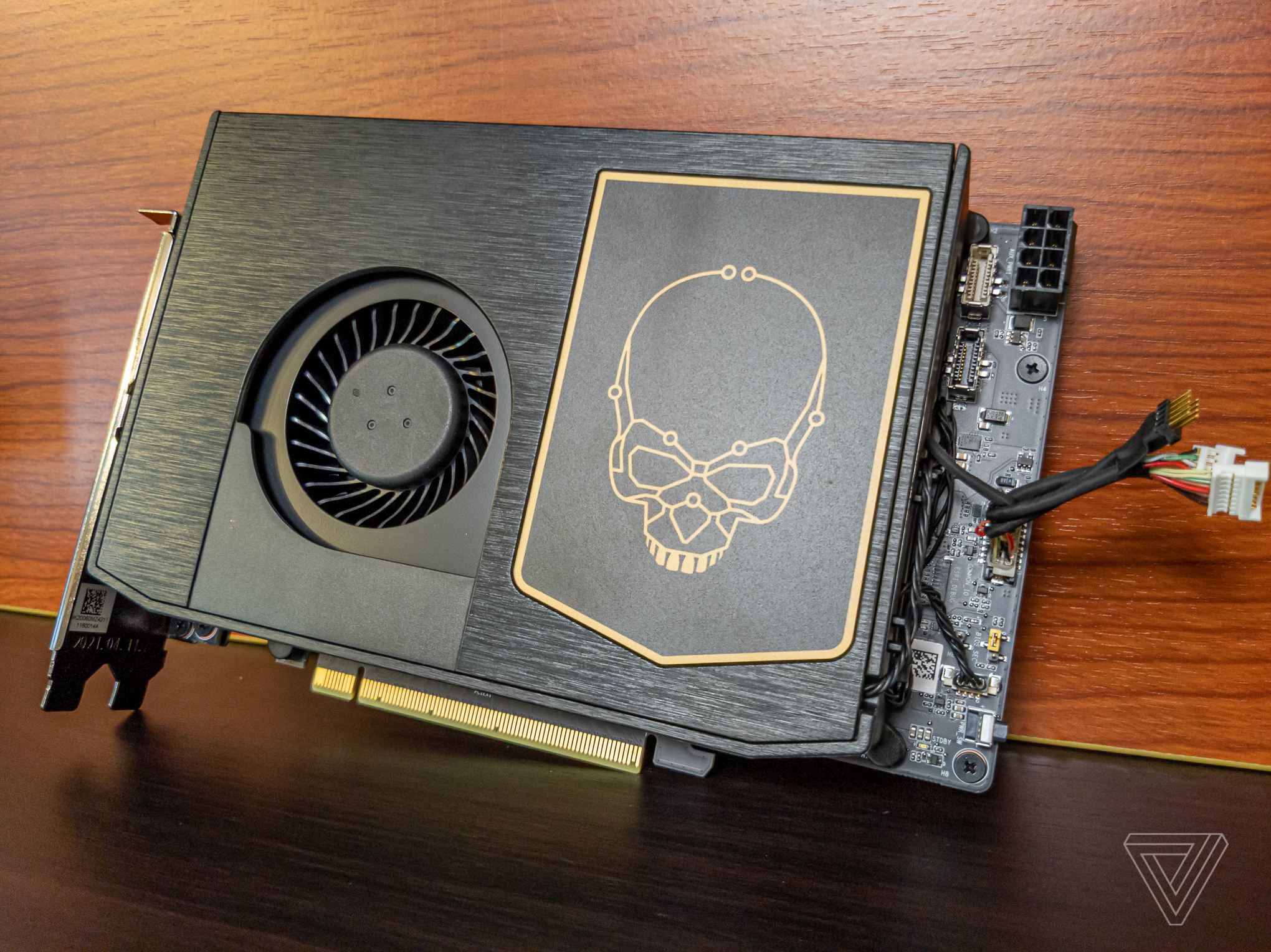
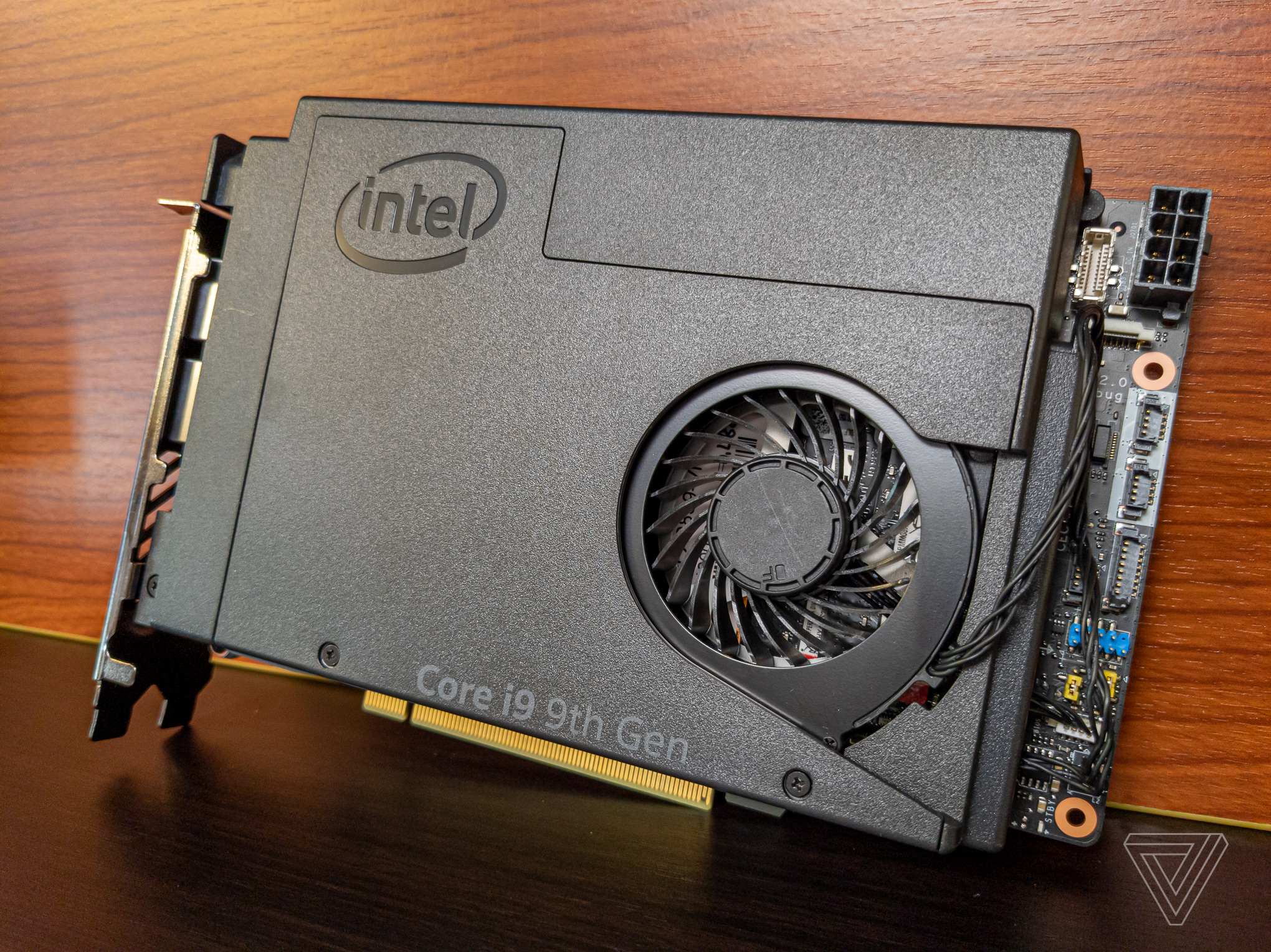
In a more perfect world, maybe Intel, AMD, and other PC giants would join forces to turn this kind of PC into a new industry standard, a replacement for the 20-year-old Mini-ITX motherboard layout that dominates small-form-factor PCs today. That’s what I’d like to see. And maybe a larger, better window to show off my graphics card, instead of mesh with an odd array of square cutouts underneath.
Photography by Sean Hollister
Correction: The screws on the Ghost Canyon case were spring loaded, but the ones on the Beast Canyon are not (save those on the Compute Element itself). They are automatically retained when you remove them, though.

